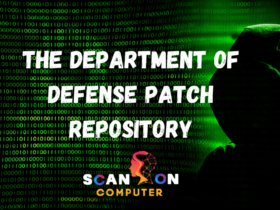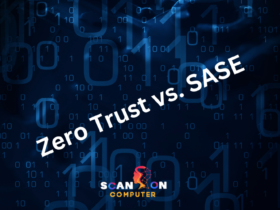Modern multicloud environments require continuous automation and AIOps with end-to-end visibility. Cloud monitoring solutions help IT teams collect key metrics to quickly identify and address performance bottlenecks.
These tools integrate data across a cloud ecosystem into one view to enhance application and customer experiences. To select the ideal tools, start by setting goals for the platform and choosing metrics that support them.
What is cloud monitoring?
Cloud monitoring is the practice of tracking and measuring the performance and availability of cloud-based IT infrastructure, including software applications. Cloud monitoring utilizes various solutions and practices to ensure applications function correctly while remaining secure and cost-efficient.
Employing the appropriate cloud monitoring tools is key to ensuring that your business can grow effectively. When selecting a solution, be sure it provides a detailed view of cloud infrastructure and applications, so you can identify potential issues before they impact users or productivity. Furthermore, ensure your solution complies with regional data protection policies so your organization operates within local regulations.
A good cloud monitoring solution should also be easy to set up and integrate into existing IT systems, providing visibility into applications and infrastructure across all locations. It should provide visibility into application performance while simultaneously identifying any security threats or production outages. In addition, its data visualization features should make informed decisions about cloud infrastructure utilization and cost optimization a possibility.
Types of cloud monitoring
Cloud monitoring is an integral component of digital infrastructures. A proper solution can help optimize your cloud architecture, monitor performance and consumption levels, ensure secure transfers, and ensure data protection. Unfortunately, implementation can present its own set of challenges; such as being complex to setup with limited tools available as well as needing to monitor both internal and external resources simultaneously.
To reduce these risks, select a cloud monitoring solution that integrates seamlessly with your IT stack and is capable of quickly and reliably identifying issues. A good monitoring tool should provide a full view of your IT environment so that you can make informed engineering, business and pricing decisions.
Furthermore, you should select a cloud monitoring solution that offers scalable visibility into your cloud infrastructure, services, and applications in order to make better business decisions and enhance user experience. In order to prevent downtime or revenue loss from cloud monitoring activities it’s essential that best practices be adhered to.
Benefits of cloud monitoring
Cloud monitoring tools help operations teams cut through the clutter of information that often overwhelms them. By providing time-stamped metrics containing timestamped, descriptive, and analytic capabilities – cloud monitoring tools help identify relevant signals quickly so action can be taken promptly.
Visibility provided by these tools enables organizations to better understand how their infrastructure is performing, optimizing costs and identifying any security vulnerabilities so that patches are quickly applied before becoming major issues.
Cloud monitoring not only identifies cost-cutting opportunities but can also enhance end user experiences and customer retention, providing up-to-the-minute speed metrics and alerts. By detecting errors before they impact customers, companies can prevent losing business to competitors. It can also identify trends and patterns which help make better decisions regarding cloud architecture in future. Furthermore, monitoring solutions can be automated to save both time and effort as well as adapt to different environments like IaaS servers, RDS DB instances, or SaaS applications.
How does cloud monitoring work?
Many business processes and operations rely heavily on cloud applications, with even one issue having serious repercussions for them. External-facing apps may cause lost sales or upset customers while internal applications that perform poorly may lead to lost productivity and lower employee morale.
An effective cloud monitoring solution helps organizations avoid these issues by offering visibility into key metrics and performance, along with baseline assessments that help IT teams optimize applications and services for maximum efficiency. A good monitoring solution should also offer a centralized reporting platform so all metrics can be calculated uniformly to give an in-depth overview of their environment.
A suitable solution can also track usage activity and fees to help businesses avoid unexpected charges, while scaling seamlessly as organization activity increases – for instance adding servers when peak performance levels decrease or subtracting them when activity falls below certain thresholds. Furthermore, businesses need an approach which provides visibility across multiple environments while simultaneously monitoring individual components across them all as well as being compatible with productivity suites such as Microsoft 365 or G Suite and identity management solutions such as Duo or Okta for increased insight into their entire IT ecosystem and more informed decision making regarding cloud strategies.
Cloud monitoring best practices
Modern businesses rely on the cloud for content delivery to end-users quickly and reliably, but its complex environment necessitates regular monitoring to ensure optimal performance. Cloud monitoring tools provide invaluable visibility into key metrics like application availability/performance, data storage/transfer speeds and network security – essential tools that ensure optimal cloud operation.
An effective cloud monitoring strategy enables you to optimize your cloud footprint and lower costs. For instance, if cloud-based virtual machines (VMs) are using too many resources, monitoring utilization could reveal whether more capacity is needed; similarly, monitoring application performance helps identify any issues which impact user experience.
Prioritize metrics that matter most for your business goals. This allows you to concentrate on what matters and avoid being bogged down with unnecessary data. Furthermore, look for tools that support your IT infrastructure setup; for instance if using DigitalOcean choose an automated monitoring and alert system which monitors Droplets on its platform to keep tabs on any potential problems that arise.
Why is cloud monitoring important?
Implementing cloud monitoring tools that can identify potential issues and avoid outages is essential to the success of any organization, and the ideal tools should provide holistic, data-driven insight into application performance and workflows.
Cloud monitoring solutions should consolidate report data onto one platform so you can easily access and visualize metrics across your entire infrastructure, helping to quickly identify any potential issues while making proactive decisions that improve performance.
Another key feature of a good cloud monitoring solution is setting baselines for application activity levels. This enables you to monitor for changes in behavior and automatically add or subtract servers as required – helping ensure your applications run at peak performance without resource over usage issues.
Finally, an effective cloud monitoring solution should also enable users to effectively manage costs. This can be accomplished by tracking how much activity is taking place within your cloud environment and then identifying any fees associated with those activities. By tracking and optimizing costs in this manner, users can reduce subscription and service expenses significantly.
What are cloud monitoring tools?
Cloud monitoring tools offer a clear picture of hybrid and multicloud applications, helping you proactively discover performance bottlenecks, monitor scalability and storage needs, uncover hidden costs and improve overall application quality and reliability.
Database monitoring solutions monitor the availability, usage and data integrity of databases supporting cloud-based applications. In particular, these tools monitor metrics such as queries and scalability to ensure optimal database performance while helping determine if additional virtual capacity is necessary.
Cloud monitoring tools provide another important service: optimizing web applications and APIs so as to deliver high-quality experiences to end users and customers. This is achieved with features like scalability/load testing, performance monitoring/analysis/alerting; some monitoring tools even offer integrated reporting/analytics that give greater insight into cloud operations for informed business decisions that will enhance your cloud strategy while guaranteeing continued success of applications.
Final Thoughts
Cloud monitoring enables businesses to proactively oversee their entire virtual IT infrastructure and optimize performance, reduce risks and prevent revenue losses. Effective cloud monitoring also can enhance customer experiences, decrease MTTR time frames and prevent overspending.
Implementing effective cloud monitoring requires conducting an inventory of your digital assets and identifying which metrics are most crucial, followed by selecting suitable tools to track them against business goals.
A successful cloud monitoring tool should provide various features, including cost and user management, agentless tracking, reliable alerting, integration with end-user monitoring tools to provide you with an overview of how users interact with cloud applications and services, data reporting consolidation into one platform for easy use and storage, which helps prevent systems from becoming overburdened and slow. Netreo offers advanced cloud monitoring solutions designed to give full visibility across your entire IT infrastructure to eliminate blind spots while improving performance and avoiding costly mistakes.











Leave a Reply
View Comments